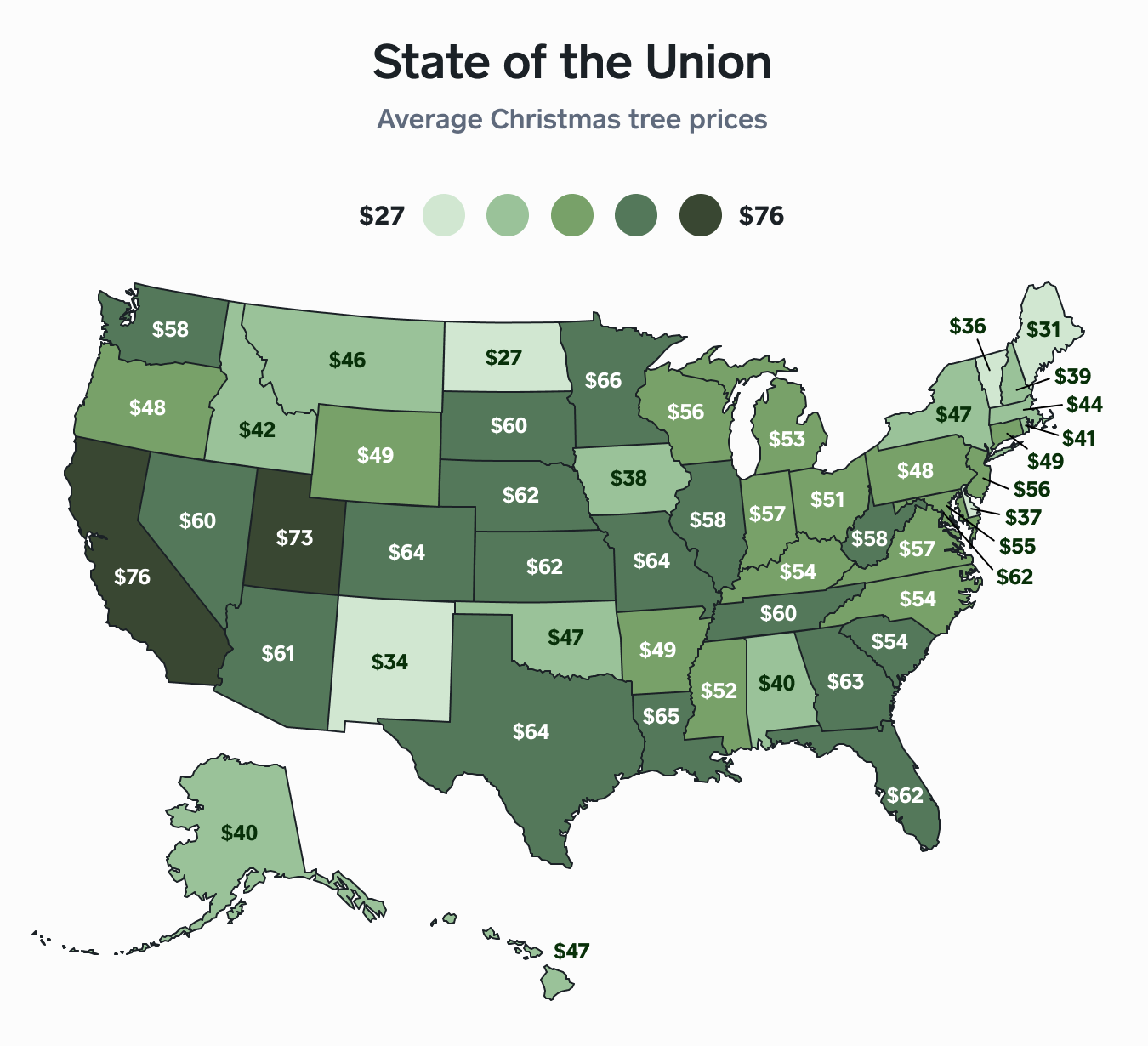For many families, shopping for a Christmas tree is an annual holiday rite. Happy children bundled up in mittens romp from row to row, pirouetting the fragrant firs to check the fullness of their branches. But the experience also has less romantic aspects. To hear Scrooge tell it, shopping for a Christmas tree might amount to fighting crowds for the privilege of haggling over a $65 plant — and getting sappy fingers.
Square, a tech company that helps businesses process credit card payments, has crunched some numbers that might guide shoppers on their quest this year and shared the results with TIME. Based on data from hundreds of thousands of tree sales in 2016, among thousands of sellers across the U.S., the company charted the highs and lows of the season.

According to Square’s analysis, the most popular day to buy a tree is the first Saturday after Thanksgiving weekend — which will be Dec. 2 in 2017 — and that likely means the crowds will be at their worst. Whether they’re shopping while still digesting turkey or later on, families who want to avoid the bustle would do best to find a way to do their tree-shopping in the middle of the week.
Americans spend around $250 million on Christmas trees each year, and prices are at their highest on the day after Thanksgiving, per Square’s data. As the calendar creeps closer to Christmas, prices go down and the crowds thin out.
Various factors are likely at work here. Assuming the early shoppers buy the finest, costliest specimens, then the price is going down along with a drop in tree quality and selection. Higher prices may also reflect a premium on time, with families who pay twice as much getting to enjoy needles in their carpeting for twice as long. Prices also vary based on species, with the soft, aromatic Douglas fir earning sellers a bigger buck than a species like Scotch pine, according to research from Penn State.
Square also compared data from sellers in various states, with average prices ranging from $76 in sunny California to $27 in snowy North Dakota. That benchmark may help suspicious shoppers, who are not steeped in the nuances of Christmas-tree economics, feel confident about whether they’re getting a good deal.

More Must-Reads from TIME
- Donald Trump Is TIME's 2024 Person of the Year
- Why We Chose Trump as Person of the Year
- Is Intermittent Fasting Good or Bad for You?
- The 100 Must-Read Books of 2024
- The 20 Best Christmas TV Episodes
- Column: If Optimism Feels Ridiculous Now, Try Hope
- The Future of Climate Action Is Trade Policy
- Merle Bombardieri Is Helping People Make the Baby Decision
Contact us at letters@time.com